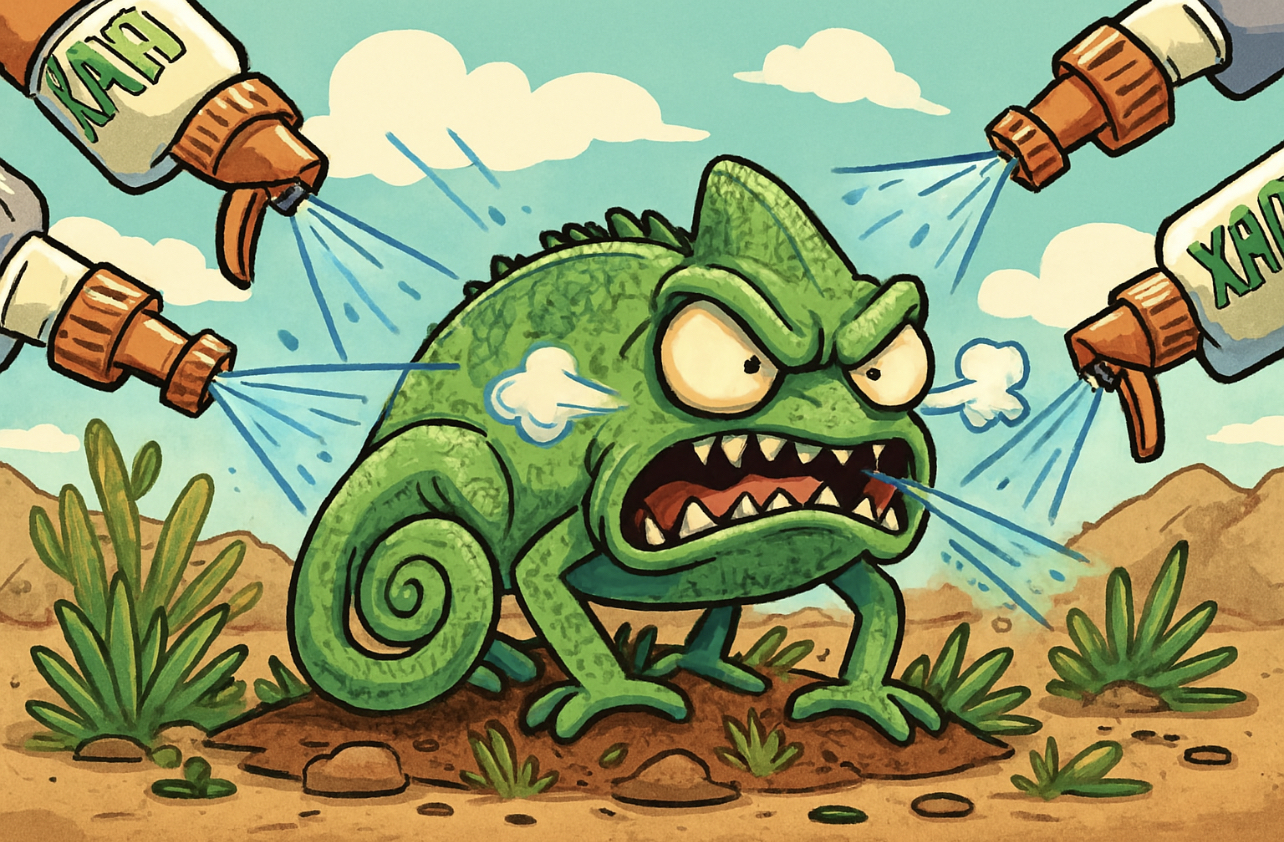Myth 45: “The Chameleon Cage Needs to Be Misted Several Times a Day”

This myth is not just outdated — it's biologically inverted and potentially lethal. Misting chameleon cages multiple times during the day, especially under high heat and bright lights, is a practice rooted in misunderstanding and convenience, not science. It reverses the natural hydration cycle that chameleons have evolved with over millions of years, and the consequences are profound.
The Natural Hydration Cycle: Moist Nights, Dry Days
In the wild, chameleons hydrate primarily during the night and early morning. They rest in cool, humid conditions, often enveloped in fog, inhaled wole night. As dawn breaks, the fog condenses into dew, which they might drink from leaves. This cycle — cold, moist nights followed by warm, dry days — is essential for maintaining their internal homeostasis.
But in captivity, this rhythm is often flipped:
Terrariums remain warm and dry at night, with no fog or humidity.
Daytime misting occurs under intense heat and lighting, creating a hot, wet microclimate.
This reversal — hot, moist days and warm, dry nights — is not just unnatural, it's dangerous. It disrupts the chameleon's physiological balance, leading to stress, and increased susceptibility to disease.
Why Daytime Misting Is Harmful
When misting is done during the day:
The temperature is often higher than in the wild, especially with basking spots.
Water is sprayed into a hot, stagnant environment, creating ideal conditions for bacterial and fungal growth.
Respiratory infections become more likely, as pathogens thrive in warm, moist air with poor circulation.
Some argue that rain occurs during the day in the wild — and it does. But rain in nature is accompanied by cloud cover and temperature drops. Even in tropical regions, rainwater rarely exceeds 27°C, and often falls at 21°C or lower, especially at altitude. In contrast, misting in captivity often happens at 30–35°C, under direct heat lamps — a completely different scenario. To mitigate its effect, intense forceful ventilation by fans is needed, but then: why to mist if we anyway ventilate the moisture away?
What You Should Do Instead
To replicate natural hydration cycles and protect your chameleon's health:
Mist only at night, early morning before the lights go ON, or after lights go OFF.
Use a fogger overnight to simulate natural fog and dew formation.
If daytime misting is absolutely necessary:• Turn off all heat sources and lights at least one hour before misting.
Mist, then wait another hour before turning them back on.
For drinking, use a dripper system:• Provides localized hydration.
Doesn't alter the cage's humidity drastically.
Mimic dew drops without creating a wet environment.
If you really need to mist at daytime, lower the temperature by switching off all heat sources long before misting and switch them on only after the water has evaporated.
Outdoor Caging: A Special Case
In outdoor setups, misting is sometimes used to cool down enclosures in hot climates. While this can help chameleons survive extreme heat, it's still unnatural and risky. These animals may reproduce under such conditions, but they rarely reach full lifespans. Many die at half their potential age or less due to chronic stress and environmental mismatch.
Conclusion: Respect the Rhythm
Chameleons are not desert reptiles. They are fog drinkers, evolved to hydrate in cool, humid darkness. Misting during the day under heat lamps is not hydration — it's a recipe for illness. If you truly care for your chameleon, respect its evolutionary biology, not your convenience.
Hydrate wisely, mist strategically, and let the night do the healing.